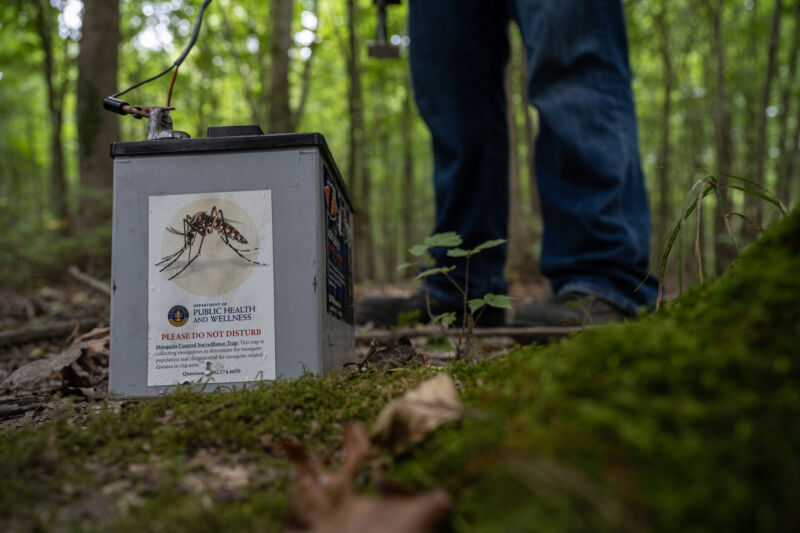Spread of deadly EEE virus explodes 5-fold in New York; one death reported

New York is facing an unusual boom in mosquitoes toting the deadly eastern equine encephalitis (EEE) virus, which has already led to one rare death in the state and a declaration of an “imminent threat” by officials.
While the state’s surveillance system typically picks up EEE-positive mosquitoes in two or three counties each year, this year there have been 15 affected counties, which are scattered all across New York, State Health Commissioner James McDonald said this week.
“Eastern equine encephalitis is different this year,” McDonald said, noting the deadly nature of the infection, which has a mortality rate of between 30 and 50 percent. “Mosquitoes, once a nuisance, are now a threat,” McDonald added. “I urge all New Yorkers to prevent mosquito bites by using insect repellents, wearing long-sleeved clothing, and removing free-standing water near their homes. Fall is officially here, but mosquitoes will be around until we see multiple nights of below-freezing temperatures.”
On Monday, McDonald issued a Declaration of an Imminent Threat to Public Health for EEE, and Governor Kathy Hochul announced statewide actions to prevent infections. At the same time as the declaration, the officials reported the death of a New Yorker who developed EEE. The case, which was confirmed in Ulster County on September 20, is the state’s first EEE case since 2015.
The disease is very rare in New York. Between 1971 and 2024, there were only 12 cases of EEE reported in the state; seven cases were fatal.
Rare but deadly
EEE is generally rare in the US, with an average of only 11 cases reported per year, according to the Centers for Disease Control and Prevention. The virus lurks in wild birds and spreads to people and other animals via mosquitoes. The virus is particularly deadly in horses—as its name suggests—with mortality rates up to 90 percent. In people, most bites from a mosquito carrying the EEE virus do not lead to EEE. In fact, the CDC estimates that only about 4–5 percent of infected people develop the disease; most remain asymptomatic.
Fo those who develop EEE, the virus travels from the mosquito bite into the lymph system and spreads from there to cause a systemic infection. Initial symptoms are unspecific, including fever, headache, malaise, chills, joint pain, nausea, and vomiting. This can progress to inflammation of the brain and neurological symptoms, including altered mental state and seizures. Children under the age of 15 and adults over the age of 50 are most at risk.
The CDC estimates that about 30 percent of people who develop severe EEE die of the disease. But, with small numbers of cases over time, the reported mortality rates can vary. In Massachusetts, for instance, about 50 percent of the cases have been fatal. Among those who survive neuro-invasive disease, many are left severely disabled, and some die within a few years due to complications. There is no vaccine for EEE and no specific treatments.
Overall numbers
While New York seems to be experiencing an unusual surge of EEE-positive mosquitoes, the country as a whole is not necessarily seeing an uptick in cases. Only 10 cases from six states have been reported to the CDC this year. That count does not include the New York case, which would bring the total to 11, around the country’s average number of cases per year.
In addition to New York, the states that have reported cases are Massachusetts, Vermont, New Jersey, Rhode Island, Wisconsin, and New Hampshire. Most cases have been in the Northeast, where cases are typically reported between mid-June and early October before freezing temperatures kill off mosquito populations.
The death in New York is at least the second EEE death this year. In August, New Hampshire’s health department reported the death of an EEE case, and local media reports identified the person as a previously healthy 41-year-old man from Hampstead.
EEE gained attention last month when a small town in Massachusetts urged residents to follow an evening curfew to avoid mosquito bites. The move came after the state announced its first EEE case this year (the state’s case count is now at four) and declared a “critical risk level” in four communities.
Between 2003 and 2023, the highest tally of cases in a year was in 2019, when states reported 38 EEE cases.
Source link
